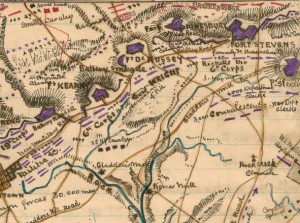The first primary source I examined was an 107 year old newspaper article from a publication called The Washington Bee, trying to preserve the home of the late Frederick Douglass. The article expresses the importance of the man and why his home in D.C. needs to be saved because of the former fact. The main point of the piece was to ask for donations so that the home could be made into a historical monument so that all can see his influence.
Conclusions
It is very clear that the article is written by an African-American individual, specifically because of a sentence early on that reads: “It is now twelve years since Frederick Douglass, to whom the Negro people owe more to any member of our race…”. Upon further research I discovered that The Washington Bee was a weekly publication mostly written and read by African-Americans. The publication was syndicated from 1882 to 1922 and focused heavily on the activities of local African-Americans. The year 1907 was still a time of great discrimination and so the article becomes even more important because it expresses an admiration for a figure who is yet to reach higher acclaim by other communities.
The second primary source I examined was a map of the Confederate forces plan to attack Washington D.C. in 1864 stored in the Library of Congress. The map was created by Robert Knox Sneden (1832-1918). The document shows the locations and directions for several rebel units and the specific areas they are supposed to attack. There are numerous drawings of forts listed along with sketches of new roads and areas of where there is blockage complete with small notes describing each as such. At the bottom of the document there are handwritten notes by the mapmaker listing the number of soldiers each side has and the number of casualties suffered.
Conclusions
Research indicates that Sneden was a Union mapmaker and painter who was captured by the South in 1863 and was held as a POW until the war ended. During his imprisonment , he created many maps and diagrams, including this one. According to the LOC website, the attack the map shows was a plan that was eventually abandoned because there was too much Union reinforcement. This map is dated september 1864 while the attack was scheduled for July of the same year meaning this map is simply a document created afterward as a historical record by an observer.
